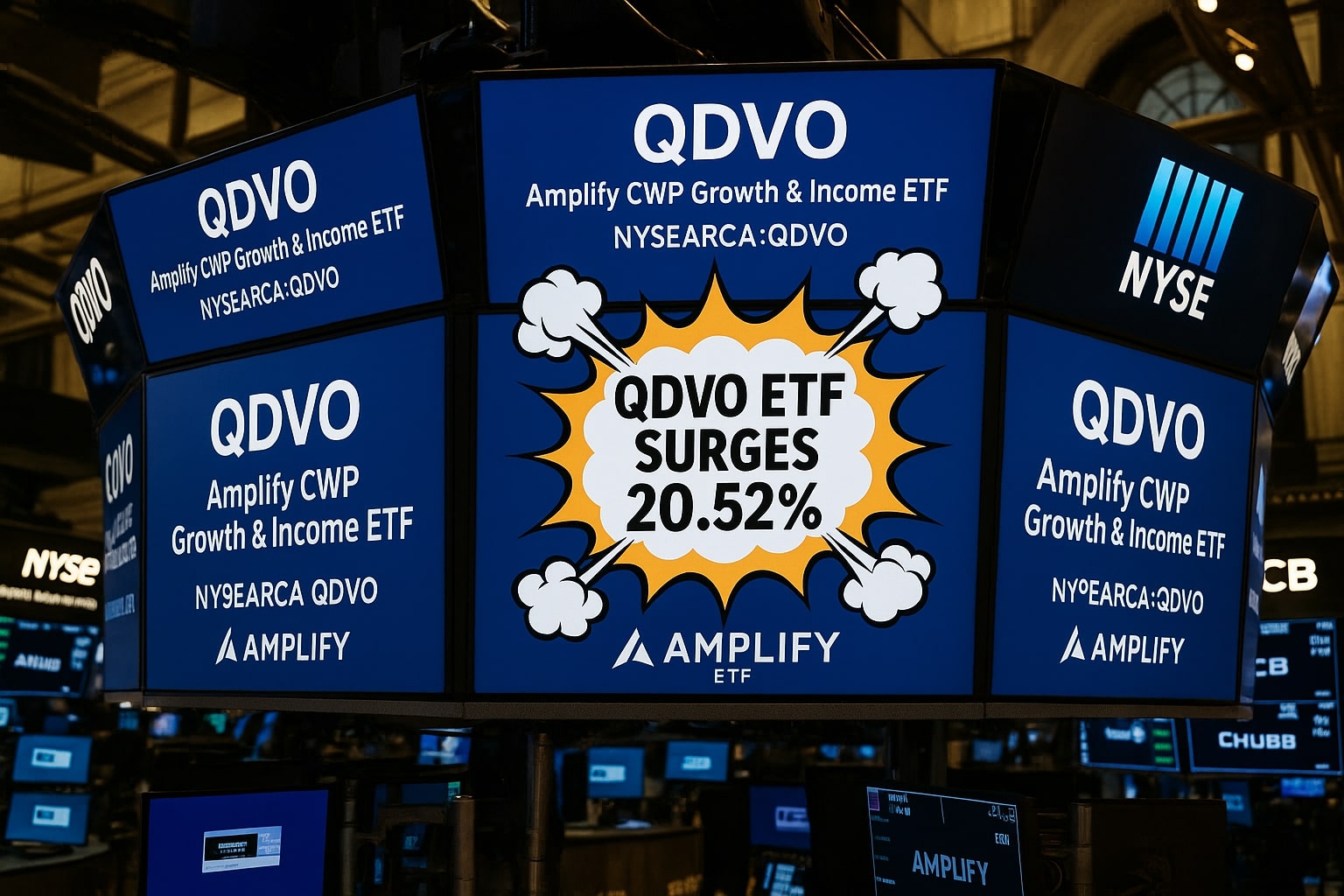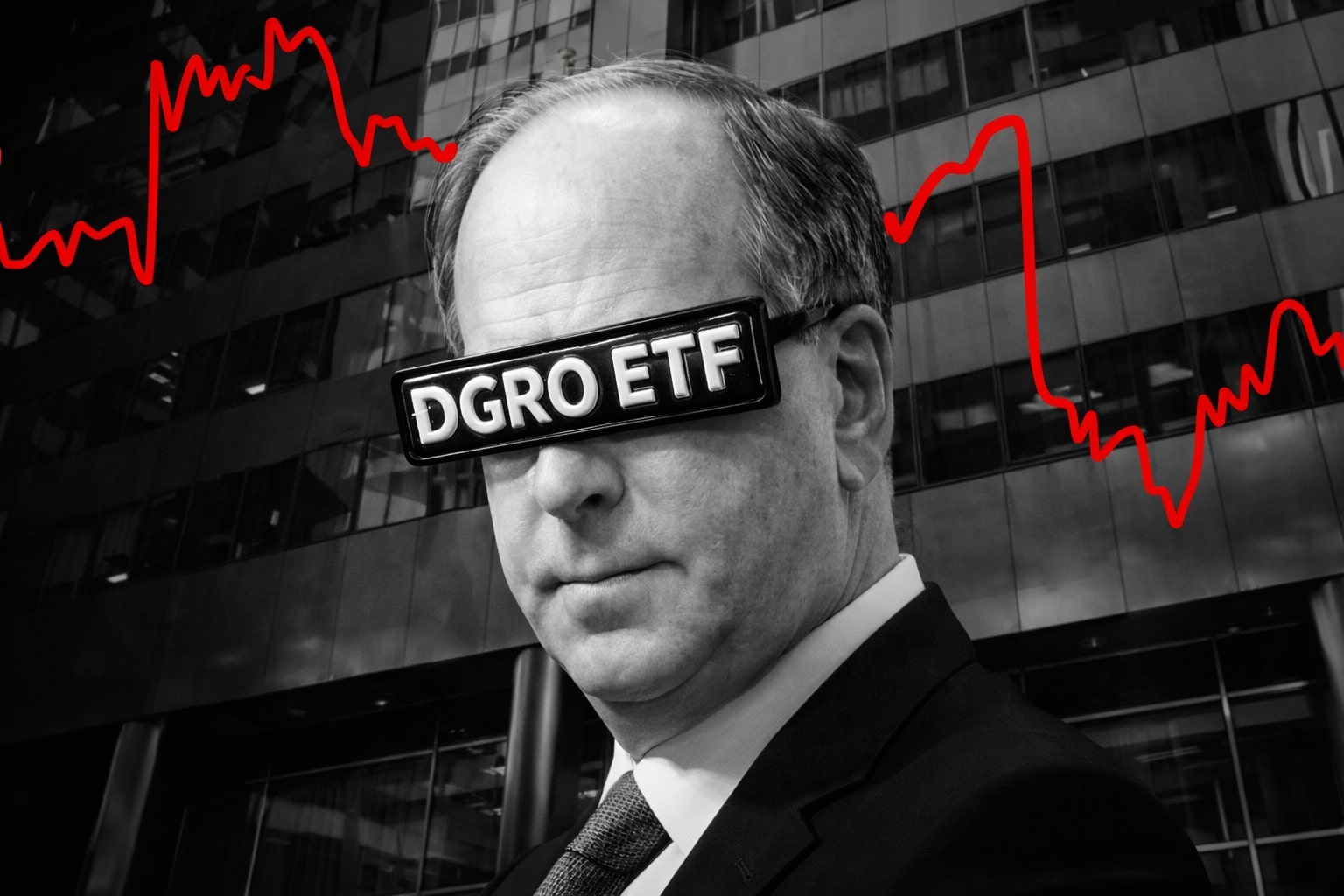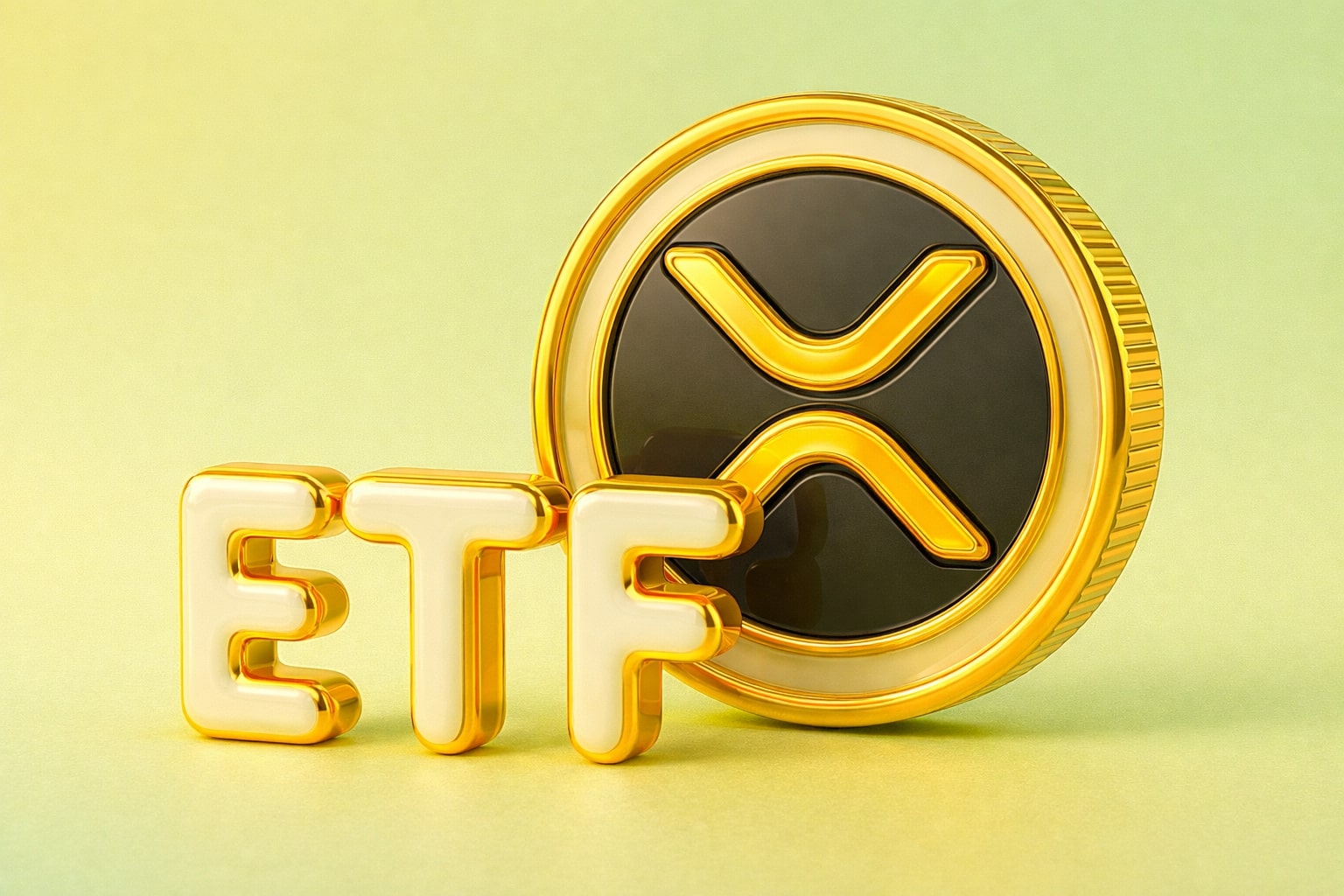
QDVO ETF Surges 20.52% With Tactical Income and Growth Play
Amplify’s NYSEARCA:QDVO Outperforms QQQI and JEPQ With Smart Covered Call Strategy | That's TradingNEWS
Dual Engine Strategy Drives NYSEARCA:QDVO Performance Beyond Expectations
Outperforming QQQI and JEPQ With 20.52% Total Return in Under 1 Year
Since its August 2024 inception, NYSEARCA:QDVO has delivered a 20.52% total return, comprised of 12.36% capital appreciation and $2.04 in distributions, representing an 8.16% yield on cost. This outpaces peers like QQQI (17.12%) and JEPQ (12.95%), cementing QDVO’s lead among tactical income ETFs. The ETF's market price currently stands at $28.09, well above its $25 IPO level, reflecting strong market confidence and tactical execution.
Covered Calls Done Differently: Tactical, Not Blanket Income Strategy
Where many ETFs mechanically write calls across the portfolio, QDVO employs a selective, short-duration covered call overlay, focusing on 1-month contracts to capture option premiums when volatility aligns favorably. This flexibility allows the fund to participate in upside runs while harvesting 4–6% in call income, layered atop 1–2% in dividend flows from underlying holdings. It is this precise, data-driven calibration that separates QDVO from income-at-any-cost strategies like JEPQ and QQQI, enabling it to maintain upside participation without full income sacrifice.
Top 10 Holdings Fuel Momentum, Representing Over 61% of Portfolio Weight
QDVO’s portfolio is anchored in U.S. large-cap growth stocks, particularly in technology. The top 10 names make up 61.37% of exposure, including heavy allocations to NVIDIA (12.3%), alongside Apple, Microsoft, Amazon, Tesla, and Alphabet. These positions trade at a 2025 P/E average of 33.11x, with EPS growth expected to surge 39.01% by 2027, bringing the forward multiple down to 23.73x. This growth vector provides the ballast for sustained total return while maintaining income generation capacity.
Valuation Risk: High Multiples in PLTR and HOOD Signal Stretch Points
Not every holding is attractively priced. The inclusion of Palantir (PLTR) at a staggering 263.81x forward earnings and Robinhood (HOOD) at 84.06x raises flags. Although these names only account for 0.53% and 1.61% of the ETF respectively, their elevated valuations highlight the ETF’s tilt toward speculative tech. Should the market rotate out of hyper-growth names, QDVO’s NAV may face volatility-driven compression, especially since call premiums could shrink further in a low-VIX regime.
Sector Concentration and Structural Guardrails
Tech exposure dominates the portfolio, with 43% allocated to the information technology sector alone. While this has fueled performance, it introduces cyclical fragility. Importantly, QDVO’s internal safeguards prevent any single sector from exceeding 50% or a single stock from surpassing 15%, maintaining structural discipline. Still, investors must weigh the reality that a bulk of QDVO’s success hinges on continued tech outperformance.
Low Implied Volatility Curtails Premiums but Preserves Upside
The Nasdaq 100 Volatility Index (VXN) fell below 19 recently, limiting near-term call income potential. This low-volatility backdrop means that QDVO’s tactical approach shines—by not being forced to sell calls at unattractive levels, the ETF avoids capping growth prematurely. This stands in contrast to ETFs like JEPQ, which write calls systematically, often regardless of the macro backdrop. From a technical standpoint, QQQ (a proxy for QDVO’s equity base) shows bullish momentum with RSI nearing 70 and strong support at $530. This signals upside resilience even if options premiums remain modest.
Liquidity and Size Still Concerning: $116M AUM, 82K Avg Daily Volume
As of July 18, 2025, QDVO holds just $116 million AUM, with an average daily volume of 82,000 shares and a 30-day median bid-ask spread of 11bps. These figures confirm lower institutional engagement and a retail-skewed holder base, raising caution for large investors. Limit orders are strongly advised during entry or exit, especially near market open.
Distributions Impressive: 9.87% Stated Yield, Monthly Cadence Maintained
With a 9.87% stated distribution rate, QDVO continues to deliver meaningful monthly income. Its average monthly payout is $0.20, with a cumulative $2.04 distributed in 10 months. Investors locking in now are effectively receiving a 7.26% forward base yield, assuming stable distribution flow. This remains well above Treasury yields and inflation-adjusted returns, supporting its role in income portfolios—particularly for those seeking yield without completely surrendering upside.
PEG Ratio Elevated at 2.8x Despite Strong Earnings Growth Forecasts
QDVO’s holdings reflect a blended PEG ratio of 2.8x, driven by an average EPS growth rate of 10.55% and P/E near 30x. While growth outlooks justify the current multiples, the PEG reading suggests valuations are not cheap, particularly for investors focused on GARP (Growth at a Reasonable Price). Yet, in a landscape where real yields are compressing and rate cuts loom, premium growth remains highly coveted—and priced accordingly.
Recent Underperformance Since April Low Raises Tactical Concerns
While QDVO has outperformed QQQ and SPY since launch, it has lagged both since the April 8, 2025 market low. This divergence is attributed to low implied volatility capping call income, while QQQ and SPY—fully exposed to equity beta—continued higher. As volatility returns (potentially with August/September seasonality), QDVO’s income engine may reaccelerate, restoring its relative edge. But short-term investors should be mindful of near-term lag.
Verdict: Tactical Advantage, Strong Yield, But Volatility Needed to Outperform
BUY – with tactical entry
QDVO (NYSEARCA:QDVO) offers one of the most compelling growth-and-income hybrids in the ETF space today. Its 20.52% total return, lean 55bps expense ratio, and precision-focused call writing strategy make it superior to passive income peers. However, the ETF’s success is tethered to tech momentum, and low volatility caps current income expansion.
Investors seeking monthly cash flow with equity upside exposure—especially in a bull market driven by megacap growth—should consider QDVO a strategic Buy. But this is a position that must be actively monitored, especially in the event of tech-sector reversion or volatility regime shifts.
If volatility climbs, QDVO will outshine again. Until then, it remains a smart-income core holding with a forward-looking total return profile far superior to traditional yield traps.
That's TradingNEWS
Read More
-
DGRO ETF Price: Is DGRO at $69.17 Still the Better Dividend-Growth Bet?
17.12.2025 · TradingNEWS ArchiveStocks
-
XRP Price Stuck Below $2 As XRPI at $10.74 and XRPR at $15.26 Ride $1B+ ETF Inflows
17.12.2025 · TradingNEWS ArchiveCrypto
-
Natural Gas Price Forecast - NG=F Steady Near $4 as TTF Jumps on Colder Forecasts and LNG Outage Risk
17.12.2025 · TradingNEWS ArchiveCommodities
-
USD/JPY Price Forecast: USDJPY=X 155.50 Pivot Before BoJ Hike and US CPI
17.12.2025 · TradingNEWS ArchiveForex


















